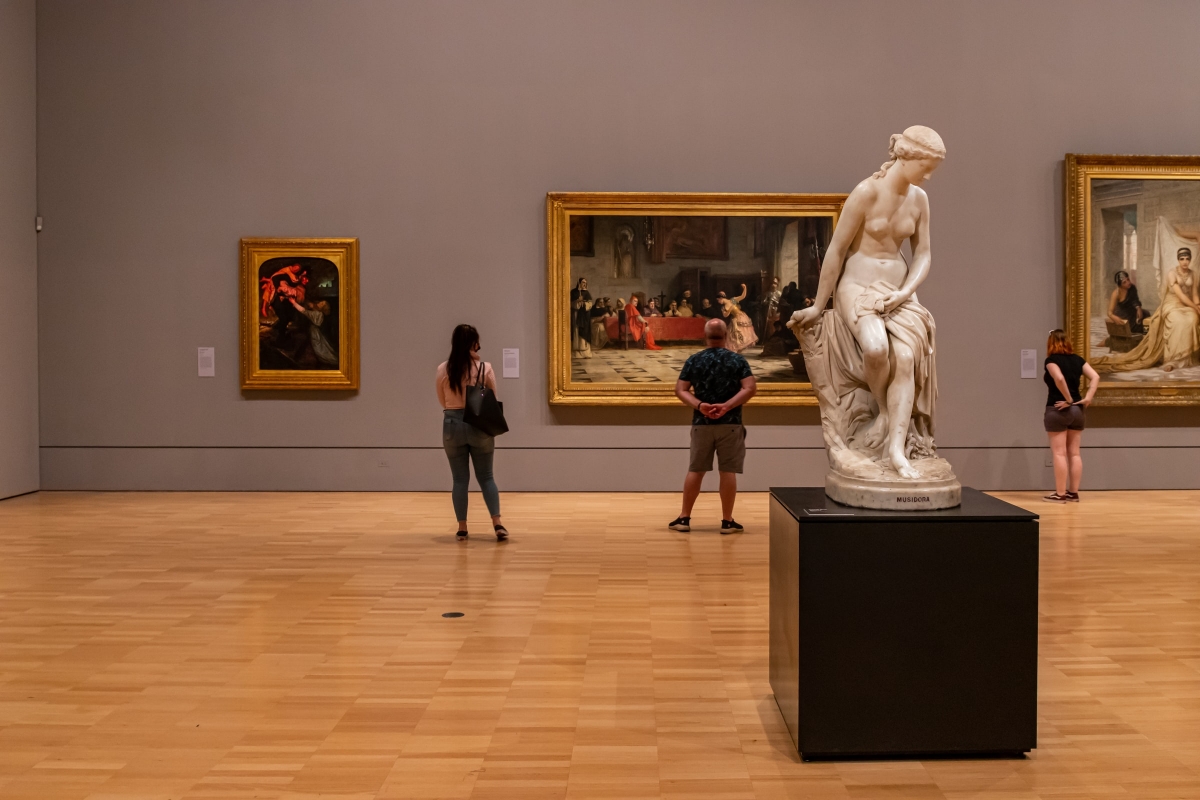In a three-part series, carefully curated for international students, the Virtual Meet NGV: Australian Adventure Exhibition showcases a range of artworks across different Australian artists. This series is co-hosted by the NGV team and NGV International Student Ambassadors, funded by Study Melbourne’s International Student Welfare Program.
I attended the third session on 24th July, featuring Indigenous arts in the Central Desert through an online platform, Webex.
In the 90-minute interactive session, we were introduced to a range of Indigenous artworks in the central desert, demonstrating the culture through their art. Session guides, John and Sarah, began the exhibition with a preface into the Central Desert and a brief introduction to the Aboriginal culture. This helped in digesting the exhibition information with a contextualisation of the Central Desert.
As an international student in Melbourne, I admit that I knew very little about Indigenous culture and had close to no interaction with the community. Apart from the minimal discussions in tutorials, there were little opportunities for me to learn more about their culture. Thus, this virtual exhibition was a stepping stone in giving me a deeper insight into an important turning point in Australia’s history.
One of the art pieces that was brought to my attention was the Macdonnell Ranges Landscape painting. The watercolour landscape painting beautifully depicts the ranges, expressing the beauty of the Central Desert.
Drawn by Albert Namatjira in the early 1950s, who went on to become one of the most important artists in Indigenous history. He became the first Indigenous artist in Australia to be regarded in the country. Aboriginal art had been long ignored by the Australian art world and the entrance of Namatjira’s works proved that Aboriginal art can and should be equally acknowledged and appreciated.
Some of the other noticeable artworks showcased were “the Honey Ant Dreaming” mural by Kaapa Tjampitjinpa and “the Big Yam dreaming” by Emily Kam Kngwarray.
‘Jukurrpa’ which translates into dreaming, is a word used by the Warlpiri people in the Northern territory to describe “individual ancestral beings, or to any manifestation of their power and nature, i.e. knowledge of their travels and activities, rituals, designs, songs, places, ceremonies.”
Throughout the session, I learnt that dreaming is an important aspect of their culture that is incorporated into many of the Indigenous stories and artworks. I also found it interesting how many of these artworks represented their cultural roots and stories.
As an international student, this experience really brought light onto a less-often discussed topic of Indigeneity within society. Understanding Australian Indigenous history and culture is an important part of developing a reciprocal relationship and mutual respect.
If you’re interested in future exhibitions to know more about Australia’s indigenous and non-indigenous artists, keep your eyes peeled on NGV’s upcoming events here.
Meld strongly advises international students to practice social distancing, abide by their city’s lockdown rules and to wear a mask outdoors during the Covid-19 pandemic.
If you need any help and questions send us a message at meld@meldmagazine.com.au or contact your respective state’s Study Australia Partners.

